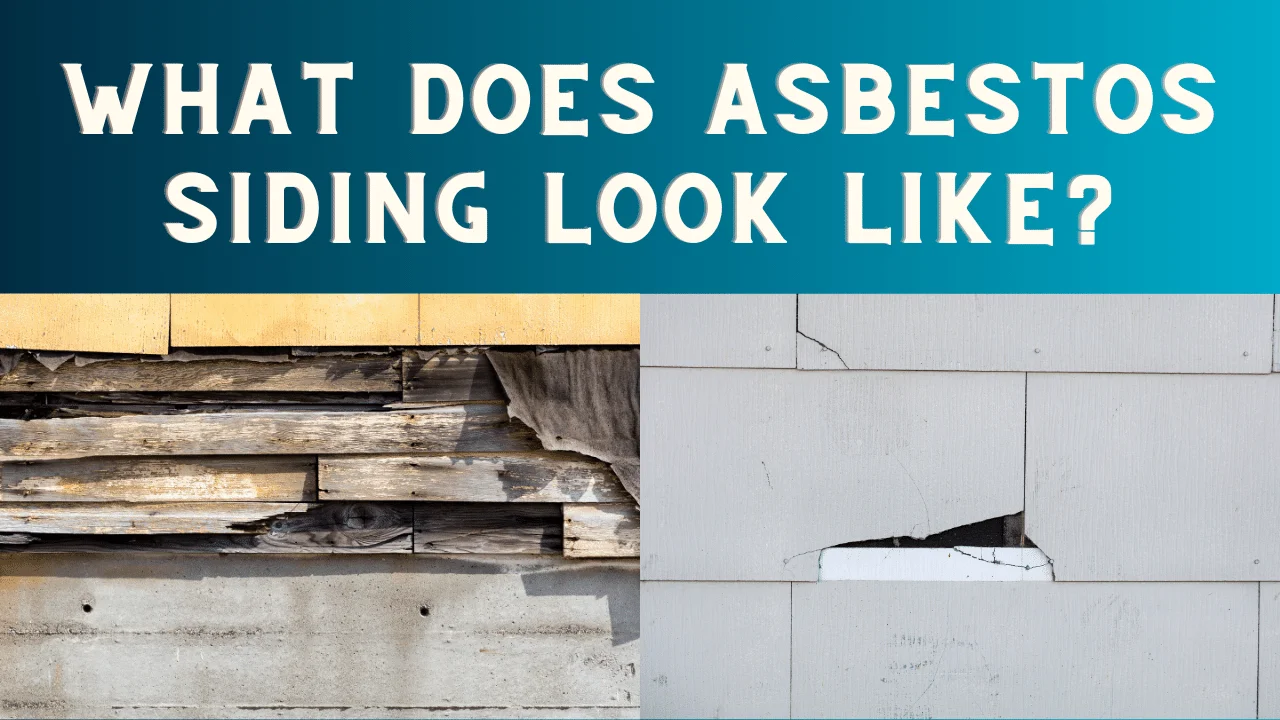Throughout most of the twentieth century, asbestos siding was widely used in construction due to its fire resistance and long lifespan. Homeowners, real estate investors, and renovation specialists are currently interested in it due to its extensive use in both commercial and residential construction. Accurate identification and safe handling practices have become more important as our understanding of the health risks associated with asbestos has progressed. This article gives a detailed description of asbestos siding, including how to spot it and what factors should be considered when managing or removing it.
Understanding Asbestos Siding
Historical Use of Asbestos Siding
From the early 20th century until the late 80s, asbestos siding was widely used. Its low price, long lifespan, and fireproof properties contributed to its meteoric rise in popularity. Unless it has been covered up or replaced during renovations, asbestos siding is likely to be present in many homes built before the 1980s.
Visual Characteristics of Asbestos Siding
It can be difficult to visually identify asbestos siding because it often looks like more modern materials. You can find this siding in flat sheet or corrugated forms, and it usually looks like shingle or wood-grain siding. The most important visual features to keep an eye out for are:
In contrast to the smoother surface of contemporary materials, asbestos siding frequently has a noticeable chalky feel when touched.
Asbestos siding panels are much denser than other materials, even though they look like fibre cement, which is a lightweight material.
Asbestos siding often has unique patterns pressed into the surface, like wood grains or wavy lines, to imitate other popular siding materials of the time.
To help with identification, asbestos siding shingles usually have two or three nail holes at the bottom of each piece and measure approximately 12 inches by 24 inches.
Absence of Manufacturer’s Stamp
Asbestos siding typically does not have any kind of manufacturer’s stamp or label, in contrast to more contemporary siding materials. An important indicator that older siding materials might contain asbestos is the lack of such markings.
Health and Safety Considerations
Damage to or improper handling of the siding can cause the asbestos fibres to release, which is the main source of the material’s dangers. Understanding these risks is crucial:
While tearing down asbestos siding for renovations or demolition, dangerous fibres can be released into the air, increasing the risk of lung diseases and cancers.
Never try to remove asbestos siding or make significant alterations to it without first consulting an expert. When it comes to managing asbestos safely and complying with local regulations, it’s best to seek the advice of licenced asbestos removal specialists.
Identifying and Managing Asbestos Siding
Professional Asbestos Testing
Visual inspection alone may not always be enough to detect asbestos siding. The gold standard for confirmation is professional testing, which includes collecting samples and analysing them in a lab.
Before you start any demolition or renovation work that could damage the siding, make sure to test it thoroughly.
For reliable results and safe sample handling, use a certified asbestos testing service.
Legal and Safety Regulations
To ensure the public’s safety, certain laws and regulations govern the handling of asbestos siding:
Familiarising Oneself with Regional Rules: Asbestos management regulations, both state and federal, impose obligations on homeowners, such as the need to notify authorities, follow specific protocols for asbestos removal, and dispose of the material properly.
Recruiting Skilled Experts: Asbestos siding removal is a task best left to trained experts. They have the training and equipment to remove materials in a safe manner, reducing any potential danger to the public.
Renovation and Replacement Options
Asbestos siding can be safely and legally replaced or renovated in a number of ways for homeowners:
Sealing away: This is done by applying a new layer of siding over the old asbestos siding, which effectively traps the asbestos fibres.
Removing asbestos siding and replacing it with a safer material eliminates any health risks, but it is more expensive and involves more work.
Comparing Asbestos Siding to Other Materials
Homeowners can make better decisions regarding repairs, renovations, or replacements if they know how asbestos siding compares to other materials. Some important contrasts are as follows:
Asbestos Siding vs. Fiber Cement Siding
In contrast to asbestos siding, which contains toxic fibres, fibre cement siding is composed of non-toxic materials such as cement, sand, and cellulose fibres.
The maintenance and longevity of both materials are well-known, but fibre cement siding outshines asbestos in terms of resistance to rot and insects while posing no health risks to the homeowner.
Asbestos siding was formerly a popular choice, but fibre cement siding offers more aesthetic options and is easier to install using modern tools and techniques.
Asbestos Siding vs. Vinyl Siding
Vinyl siding is typically less expensive than other types of siding, both to install and to maintain. It eliminates asbestos’s health risks, which means fewer lawsuits and less money spent on safety measures over time.
Insulation is a common component of vinyl siding, which can increase a home’s energy efficiency and is absent from asbestos siding.
Although asbestos siding can withstand fire, vinyl siding performs better in a range of weather conditions and doesn’t degrade or pose any health risks.
Asbestos Siding vs. Wood Siding
Asbestos siding is more fireproof than wood, which is combustible and needs frequent treatment to stay fire safe.
Wood siding, in contrast to asbestos siding, which is less maintenance-intensive but potentially harmful if disturbed, requires more frequent painting, staining, and sealing to protect it from decay and damage.
Impact of Asbestos Siding on Property Value
The presence of asbestos siding can greatly affect a property’s value because of the possible expenses and health risks linked to removing or managing it.
Real Estate Considerations
Requirements for Disclosure: Asbestos is a legally mandated disclosure for sellers, but how buyers perceive it can impact the property’s marketability.
Effect on Real Estate Market Values: Due to the fear of asbestos-related health problems or the anticipated costs of asbestos abatement, properties with asbestos siding may have a lower value.
Insurance and Asbestos
Coverage Issues: Because of the high potential for expensive asbestos-related claims, many insurance companies may refuse to cover or charge more for properties that have asbestos siding.
Homeowners who have asbestos siding should think about the legal and financial ramifications that could result from asbestos exposure to their occupants or employees.
Remodeling and Asbestos Siding
Thorough preparation and expert advice are required before attempting a home renovation project on a property with asbestos siding.
Planning Your Remodeling Project
Evaluation of Asbestos Contamination: Asbestos should be identified in the siding and any other construction materials before any work is started.
Seeking Advice from Experts: To guarantee compliance with safety regulations, it is recommended to engage contractors and asbestos removal experts who specialise in handling hazardous materials.
Best Practices for Safe Handling and Remodelling
During renovations, make sure to wear protective gear and use containment methods to avoid the release of asbestos fibres.
Avoid legal trouble by following all applicable local, state, and federal regulations when handling and disposing of asbestos.
Alternatives to Removing Asbestos Siding
A safer alternative to removing asbestos siding is to encapsulate it under new siding.
An alternative to removing asbestos siding is overcladding, which involves adding a new layer of siding on top of the old asbestos siding to make it safer and more aesthetically pleasing.
FAQs
Can you paint over asbestos siding?
Yes, you can paint over asbestos siding as long as the surface is stable and not crumbling, to avoid disturbing the asbestos fibers.
How do you know if your siding contains asbestos?
Professional testing is the most reliable method to confirm if your siding contains asbestos. Look for signs like a chalky texture and absence of manufacturer’s stamps as initial indicators.
Is it expensive to remove asbestos siding?
Yes, removing asbestos siding can be costly due to the need for specialized safety procedures and disposal methods.
Can asbestos siding be repaired?
Repairing asbestos siding should be done with caution. It is often safer to encapsulate or cover it rather than perform direct repairs.
What are the risks of asbestos siding?
The main risk is the release of asbestos fibers during disturbance, which can cause serious respiratory diseases, including cancer.
Also Read: How to Stagger Vinyl Plank Flooring?
Conclusion
Safe and responsible management of older properties requires the ability to identify asbestos siding and comprehend its consequences. Homeowners can confidently preserve their property’s value and occupants’ health by navigating the complexities of asbestos with the right knowledge and professional assistance.

Shannon Reyes is a seasoned writer with a knack for crafting engaging blogs on a variety of service industries, including plumbing, cleansing, moving, pest control, and roofing. With a keen eye for detail and a passion for helping readers navigate complex topics, Shannon brings her expertise to life through informative and accessible content.










